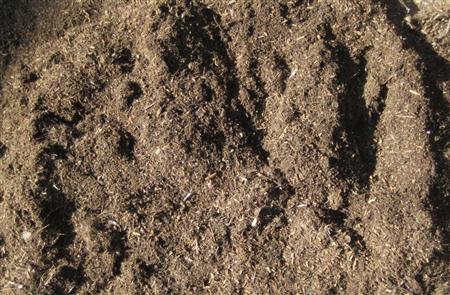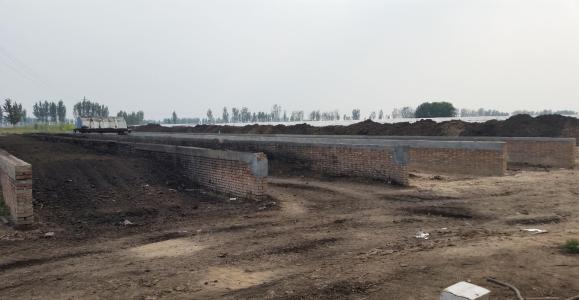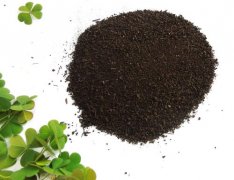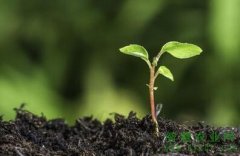Composting principle: kitchen waste composting, how to make composting box is environmentally friendly and practical
Now, we all like the ecological environment is good, there are many people, have made compost, that is, environmental protection and practical use. What about composting? Do you know? Let's take a look.

For composting to be successful, it must provide the right amount of water, air, heat and nutrients to grow in the soil. In order to ensure good ventilation, choose coarse materials or containers with ventilation and drainage equipment, and the composting height should not exceed 1.5 meters and the width should not exceed 2.0 meters. When humidity and ventilation are appropriate, microbial activity can reach its peak and the temperature can reach 40-60 degrees Celsius. C, the activity of high temperature microorganisms reached the highest point, and this condition could kill the pathogenic bacteria.
Make as many composting materials as possible, which can be stacked layer by layer or completely mixed to facilitate ventilation. But do not put the leaves or straw directly on the top of the compost, so that the air will not be able to circulate. In the case of insufficient types of materials, the raw materials can be chopped and mixed with different thicknesses. Additives may include catalysts such as microbial agents, limestone, nitrogen sources and mineral soil. You can also mix thick and thin or soft and hard materials and add rotten old compost or garden dry soil to accelerate composting. Generally, the old compost can be used as a microbial provenance, and there is no need to buy another microbial agent to add, but if the accumulation temperature is not observed in a few days, microbial agent can be added at this time. General microorganisms in a weak acid environment, good vitality, fecundity is also strong, usually do not need to add limestone, adding anti-may inhibit the effect of microorganisms. If necessary, one kilogram can be added for every 100 kilograms of composting material.
Microbial growth needs to absorb all kinds of nutrients, such as the ratio of carbon to nitrogen should be 30: 1. If the proportion of biomass (Biomass) materials such as grasses, leaves, trees and shrubs is too high, nitrogen-containing organic fertilizers such as manure, domestic feces, bone meal and shrimp shell powder should be supplemented to promote fermentation, and 0.75-1kg should be added per 100kg of compost. Composting should be well ventilated, drained and shaded. Compost rack, composting trough and composting shed with lid or plastic cloth can be designed by yourself, or can be replaced by similar box shape of domestic waste. The composting tank is about 2 x 2 x 1.5 meters in length, width and height, and the accumulation mode is as follows:

1. The bottom layer is covered with coarse materials such as tree trunks, branches, flowers and shrubs, which is about 20 centimeters high. do not press tightly to facilitate drainage and ventilation.
two。 Then lay leaves, harvest grasses and other well-mixed materials, if necessary, add the above additions, and then cover with a thin layer of old compost or soil.
3. Repeat step two, stack to 1.5 meters.
4. The surface can be covered with grass, reeds, old paper bags and leaves.
5. Keep compost properly humid and sprinkle water at the right time.
Use a self-designed composting rack, composting tank and composting shed with a lid or plastic cloth, generally made of wood, iron, wire mesh or concrete in a circular or square shape. There are gaps or holes around it to facilitate ventilation, the composting method is like the previous step, and the composting process needs to turn over and add water. The accumulation time of compost is one or two months fast and three or four months slow. If the time is too long in winter, the decay can be quickly decomposed into overripe compost. Other composting methods include the use of earthworms to decompose organic matter, the production of earthworm manure composting, fecal composting, stacking composting, etc., because it requires a longer space, time or more special treatment technology, it is not recommended for the general public to try. The importance of composting to plants and soil ecology will not be repeated here. In order for plants to grow smoothly, balanced nutrients should be provided in the soil for absorption and utilization. Reasonable fertilizer composition for different cultivated plants is still a necessary step!
- Prev

Kitchen waste into organic fertilizer: kitchen waste as organic fertilizer, how to use kitchen waste to make organic fertilizer?
In many European countries, when dealing with food waste and falling leaves in the courtyard, they often use their own courtyards to pile up naturally, and there are also people who use machines to carry out high-speed fermentation. In the early days of Taiwan, farmers all had compost houses and water and fertilizer ponds, which could provide us with room for reflection and thinking.
- Next

What are the methods of using pesticides? What are the problems with microbial pesticides?
What problems do you encounter when using pesticides, don't you know? Let's see if there are any questions you want to ask. Let's take a look. Biopesticide refers to pesticides made from natural materials, such as animals, plants and microorganisms, which are harmless to organisms.
Related
- Fuxing push coffee new agricultural production and marketing class: lack of small-scale processing plants
- Jujube rice field leisure farm deep ploughing Yilan for five years to create a space for organic food and play
- Nongyu Farm-A trial of organic papaya for brave women with advanced technology
- Four points for attention in the prevention and control of diseases and insect pests of edible fungi
- How to add nutrient solution to Edible Fungi
- Is there any good way to control edible fungus mites?
- Open Inoculation Technology of Edible Fungi
- Is there any clever way to use fertilizer for edible fungus in winter?
- What agents are used to kill the pathogens of edible fungi in the mushroom shed?
- Rapid drying of Edible Fungi

